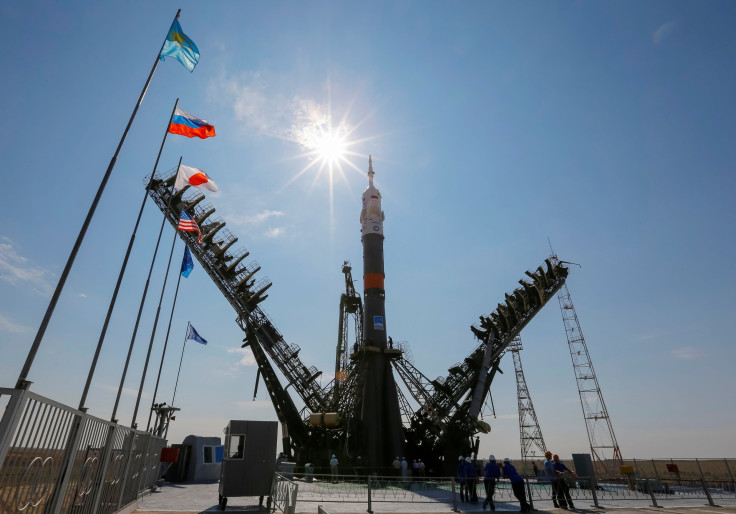Russia Prepares Upgraded Soyuz Spacecraft For Launch This Week

Russia’s space agency Roscosmos is all set to launch a new version of the Soyuz spacecraft to the International Space Station this week. The spacecraft will carry a crew of Russian, American and Japanese astronauts to the $100 billion orbiting laboratory, where they will spend four months before returning to Earth in October.
According to Roscosmos, the rocket carrier Soyuz-FG with manned spacecraft Soyuz MS had been moved from an assembly hangar to the launch pad at the Baikonur cosmodrome in Kazakhstan on Monday. Soyuz MS, which is scheduled to be launched on Wednesday, will replace the Soyuz TMA-M series spacecraft which have been is service for ISS expeditions since 2010, Reuters reported.
The new Soyuz spacecraft will carry Kate Rubins of NASA, Anatoly Ivanishin of Roscosmos and Takuya Onishi of the Japan Aerospace Exploration Agency. The backup crewmembers include Peggy Whitson of NASA, Oleg Novitskiy of Roscosmos and Thomas Pesquet of the European Space Agency, RT.com reported.
Сегодня же экипажи МКС-48/49 посетили сборочный цех на пл. 112 Байконура, где осмотрели ракету-носитель #СоюзФГ. pic.twitter.com/Fhn04nJ2ss
— РОСКОСМОС (@roscosmos) July 2, 2016
.@NASA TV shows launch of 3 station crew members live starting 8:30p ET on Weds., July 6. https://t.co/hPBKRATnwE pic.twitter.com/Zexdw6bnE6
— Intl. Space Station (@Space_Station) June 30, 2016
Rubins, Ivanishin and Onishi will test modified spacecraft systems for two days, before docking with the space station. After arriving at the ISS, the crew will be welcomed by Expedition 48 NASA astronaut Jeffrey Williams and Russian cosmonauts Aleksey Ovchinin and Oleg Skripochka.
РН "Союз-ФГ" с пилотируемым кораблем #СоюзМС установлена на «Гагаринском старте». Пуск запланирован 7 июля. pic.twitter.com/fQEcXrZ9YN
— РОСКОСМОС (@roscosmos) July 4, 2016
While Rubins and Onishi will be in their first orbital mission during Wednesday’s flight, Ivanishin has already flown to space. The Russian cosmonaut, who was launched into space on Nov. 14, 2011, and returned to Earth on April 27, 2012, was a flight engineer for the Expedition 29/30.
Developed by RSC Energia, a Russian manufacturer of spacecraft and space station components, the new Soyuz MS, once attached to the ISS, will also serve as a crew rescue vehicle and is kept permanently ready for emergency crew return to Earth.
© Copyright IBTimes 2024. All rights reserved.






















